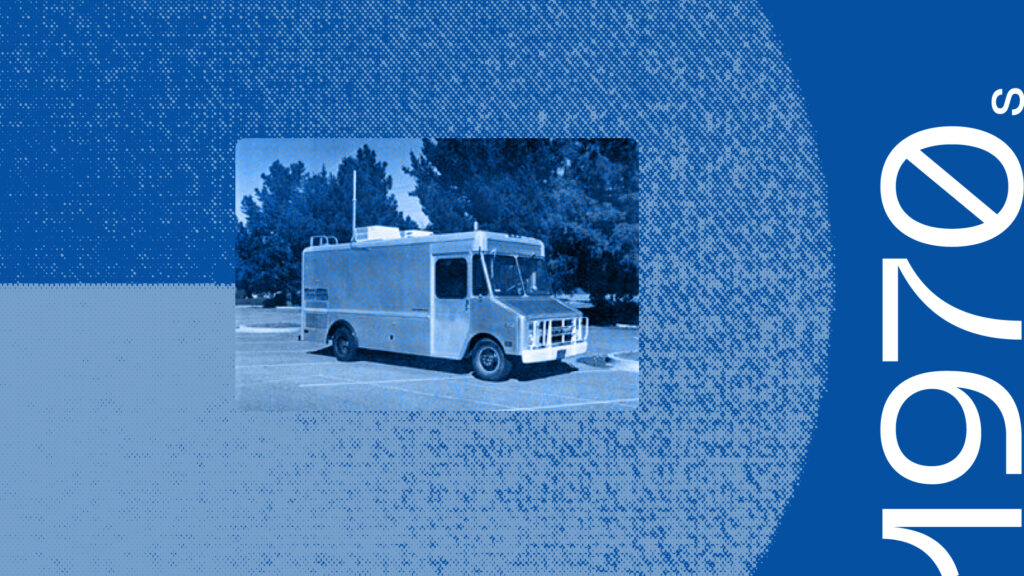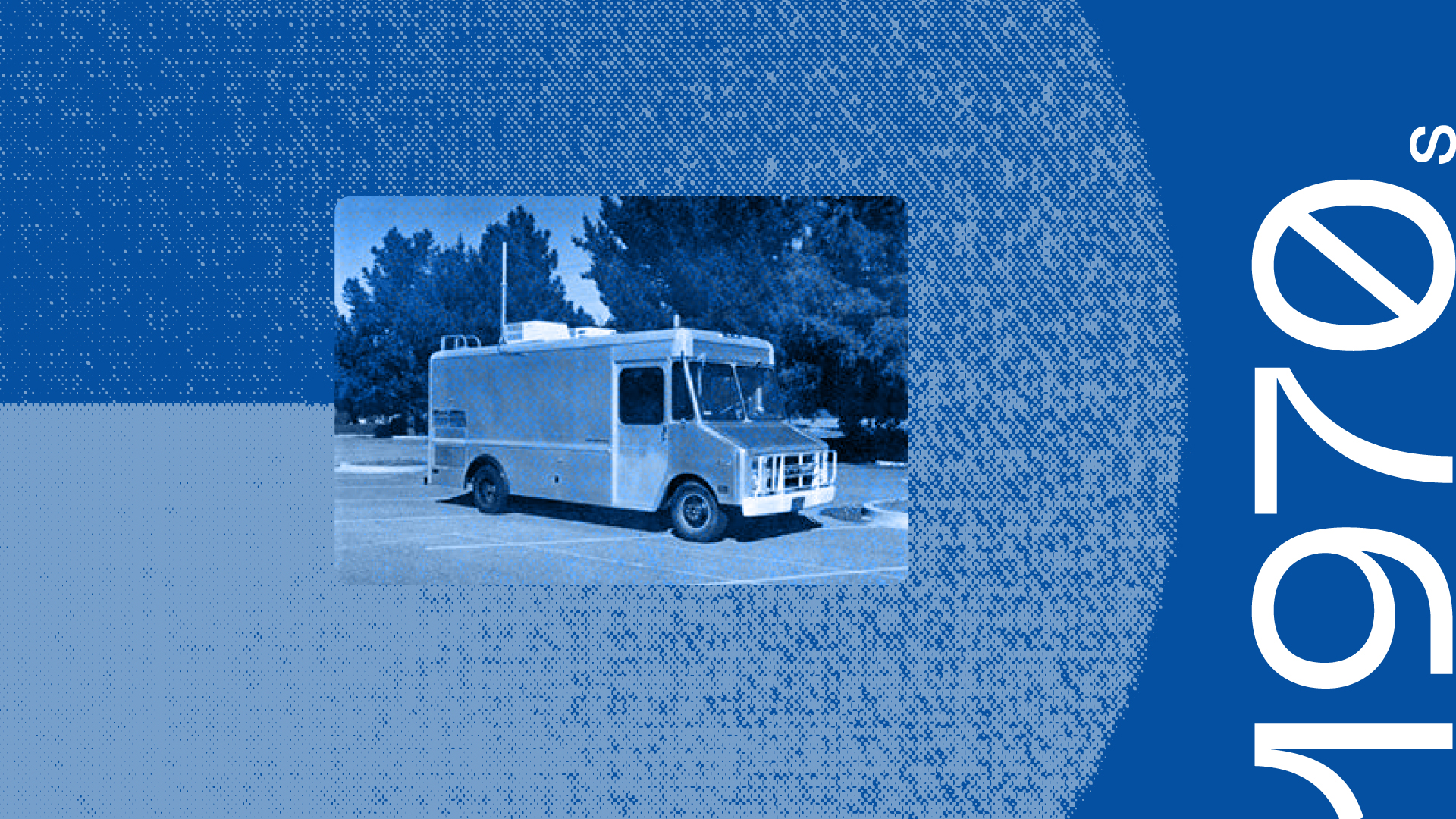
The word “Internet” refers to different kinds of networks joined together. While the Internet’s origins can be traced to the ARPANET of the late 1960s, that was a single, closed network. Internetworking made its formal debut in 1976, when SRI established the first connection between two dissimilar networks. SRI connected the wired ARPANET with SRI’s wireless packet radio network, the world’s first mobile digital radio network.
Then in 1977, the first connection was made across three dissimilar networks. This connection is considered to be the first true Internet connection. SRI played a major role in this critical milestone in the development of the modern Internet and wireless networking, both of which have had an immeasurable impact on how the world learns, works, shares and plays.
The First Connection
On November 22, 1977, the antenna of an SRI van cruising the streets of the San Francisco Bay Area transmitted data between SRI in Menlo Park and the University of Southern California in Los Angeles via London, England, across three types of networks: packet radio, satellite, and the ARPANET.
Packet radio—the first mobile digital radio—foreshadowed Wi-Fi and other kinds of wireless technology.
Route of the first three-network transmission in 1977 (image).
Technologies
In addition to the van, which served as a mobile research laboratory, a broad set of technologies played an important role in the debut of internetworking:
- Packet Radio: Built by Collins Radio Group (now Rockwell Collins)
- Terminal Interface Unit and TCP Client: Built by SRI; contains a modified Telnet terminal handler and one of the first versions of TCP, started at Stanford University and completed at SRI
- Gateways: Designed and implemented by BBN for connecting the ARPANET to the packet radio and to satellite networks
- TCP Server: In a Digital Equipment Corporation TENEX host located at USC’s Information Sciences Institute
- Packet Satellite Network: Network between England, Sweden, and the U.S.; implemented by Linkabit and others
- Packet Radio Network: Designed and implemented by BBN, Collins Radio, SRI, and the University of California, Los Angeles, with system integration and technical direction by SRI
- ARPANET: First major packet-switched network consisting of landlines in the U.S., with overseas nodes in Norway and England
Inside the SRI packet-radio van: an LSI-11 minicomputer containing TCP plus terminal interfaces and a DataMedia terminal



